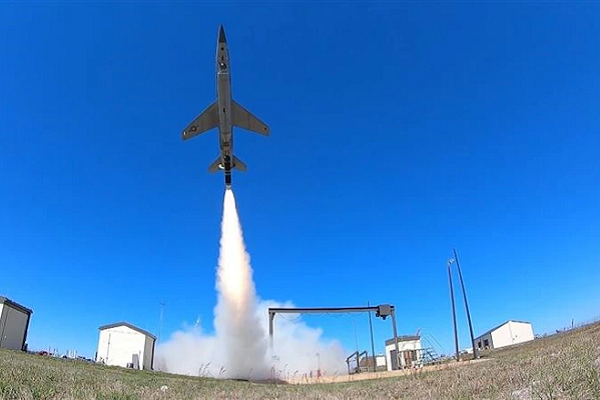US Air Force Successfully Tests Commanding AI-Piloted Jet
 The U.S. Air Force is recently hit a new milestone in developing aircraft operated by artificial intelligence and commanded by a human on the ground. The Skyborg system flew a successful 130-minute test flight out of Florida for the first time a couple of weeks ago, setting the stage for more AI-run military equipment taking orders from humans.
The U.S. Air Force is recently hit a new milestone in developing aircraft operated by artificial intelligence and commanded by a human on the ground. The Skyborg system flew a successful 130-minute test flight out of Florida for the first time a couple of weeks ago, setting the stage for more AI-run military equipment taking orders from humans.
Pilot Skyborg
For the test flight, the Skyborg system was installed on an unmanned jet. The software had a general flight plan to follow but was able to adjust based on environmental input and navigational commands from the ground. Digital geo-fences set up ahead of time helped keep the aircraft from straying too ar as well. This was the first test of Skyborg on an Air Force range and opens the door for future development and improvement. The goal for Skyborg is to make missions with unmanned aircraft more common, using operators on the ground or pilots in a nearby jet to run the mission. Air Force rules mandate any decision with potentially lethal outcomes has to be ordered by a human, to an automated system, so there won’t be totally independent AI in military jets.
“We’re extremely excited for the successful flight of an early version of the ‘brain’ of the Skyborg system. It is the first step in a marathon of progressive growth for Skyborg technology,” Brigadier General Dale White, the program executive officer for fighters and advanced aircraft said in a release about the flight. “These initial flights kick off the experimentation campaign that will continue to mature the ACS and build trust in the system.”
Military Assistance
The U.S. military has a steadily growing portfolio of tech augmented with a virtual assistant to improve decision-making. Microsoft recently won a contract worth potentially $22 billion from the U.S. Army to produce enhanced versions of its Hololens 2 smart goggles to enhance soldier capability. The Army is also working on the Joint Understanding and Dialogue Interface, JUDI, that will relay voice commands from soldiers to robotic vehicles. Meanwhile, the Navy recently started soliciting ideas for a virtual assistant for sonar operators looking for submarines. And the military research agency DARPA is working on creating a virtual assistant to improve efficiency and accuracy as part of the Perceptually-enabled Task Guidance (PTG) program. The agency wants a virtual assistant that can help parse the many complex tasks necessary to complete in the modern military.
It’s not a concept limited to the U.S., either. The Russian military is testing a voice assistant in Marker combat drones, a kind of autonomous tank. Russia may also have the closest comparison to Skyborg, with a voice assistant named Rita having been added to the MiG-35 fighter jets. Rita is supposedly capable of offering ideas to pilots during combat. The success of the recent test flight ensures Skyborg will be on America’s list of such tech for a long time to come.
“As we have throughout our history, the test enterprise is adapting our people and capabilities to support this rapidly maturing technology, and the execution of this flight test is a great milestone for our closely integrated development and acquisition team,” said Brigadier General Scott Cain, the executing agent for the test missions. “Safely executing this test and providing the knowledge needed to advance the technology is at the heart of what we do. And as always, we’re highly motivated to help bring war-winning technology to the next fight.”
Follow @voicebotai Follow @erichschwartz
Microsoft Scores $22B Army Contract for Hololens-Based AR Smart Googles
The US Navy Wants a Virtual Assistant to Help Hunt Submarines
The Russian MiG-35 Fighter Jet’s Voice Assistant Will Advise Pilots in the Air








